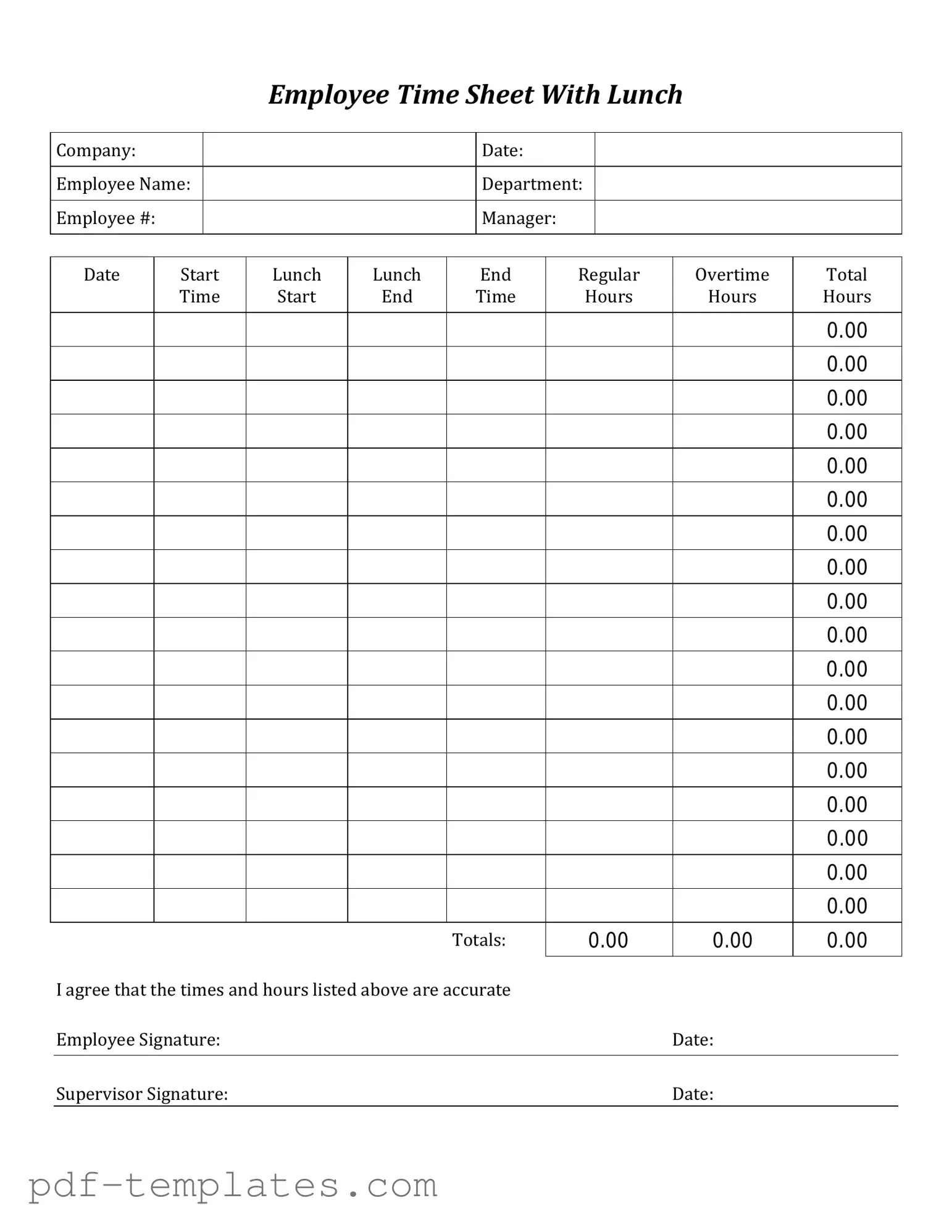The Time Card form serves as an essential tool in the realm of workforce management, facilitating accurate tracking of employee hours worked and ensuring proper compensation. This form typically captures vital information, including the employee's name, identification number, and the specific time periods worked, which may range from daily to weekly entries. Often, it incorporates sections for overtime hours, breaks, and any leave taken, providing a comprehensive overview of an employee's attendance. Additionally, the Time Card form may include spaces for supervisor signatures or approvals, reinforcing accountability within the payroll process. By streamlining the documentation of hours worked, this form not only helps employers maintain compliance with labor regulations but also empowers employees to monitor their own work hours effectively. Ultimately, the Time Card form plays a pivotal role in fostering transparency and accuracy in payroll administration, benefiting both employers and employees alike.
